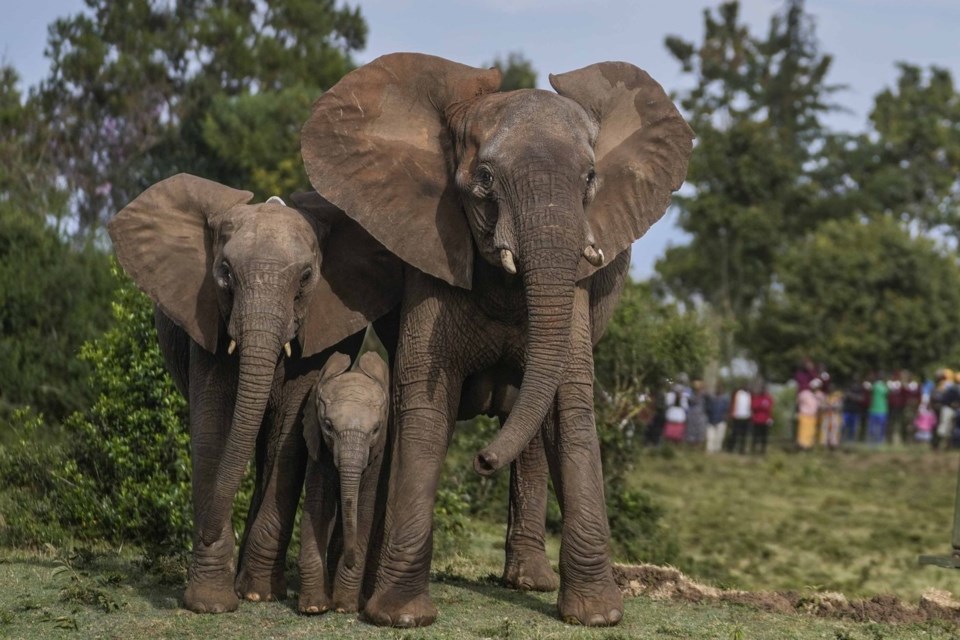MWEA, Kenya (AP) — As a helicopter hovers close to an elephant, trying to be as steady as possible, an experienced veterinarian cautiously takes aim.
A tranquilizer dart whooshes in the air, and within minutes the giant mammal surrenders to a deep slumber as teams of experts rush to measure its vitals and ensure it's doing OK.
Kenya is suffering from a problem, albeit a good one: The elephant population in the 42-square-kilometer (16-square-mile) Mwea National Reserve, east of the capital Nairobi, has flourished from its capacity of 50 to a whopping 156, overwhelming the ecosystem and requiring the relocation of about 100 of the largest land animals. It hosted 49 elephants in 1979.
According to the Kenya Wildlife Service Director General Erustus Kanga, the overpopulation in Mwea highlighted the s over the last three decades.
“This shows that poaching has been low and the elephants have been able to thrive,” Kanga said.
Experts started relocating 50 elephants last week to the expansive 780-square-kilometer (301-square-mile) Aberdare National Park in central Kenya. As of Monday, 44 elephants had been moved from Mwea to Aberdare, with six others scheduled for Tuesday.
Tourism Minister Rebecca Miano oversaw the move of five of the elephants on Monday, saying: “This will go down in history as a record, as it is the biggest exercise of its kind. It is the first time we are witnessing the translocation of 50 elephants at a go.”
The process started at dawn and involved a team of more than 100 wildlife specialists, with equipment ranging from specially fitted trucks to aircraft and cruisers. A fixed-wing aircraft conducted aerial surveillance to track down herds of elephants, which naturally move in small families of about five. The craft was in constant communication with two helicopters used to herd and separate the elephants to ensure they were relocated with their family units.
Aboard one of the helicopters is a spotter, on the lookout for elephants, and a veterinarian with a tranquilizer gun.
Once an elephant is sedated, a ground team of veterinary specialists and rangers rushes to find it and clear thickets to make way for transport crews. Its vitals are monitored as another group of rangers works on lifting the massive animal, weighing hundreds of kilograms, onto specialized trucks, to be driven 120 kilometers (74 miles) to their new home.
Kanga, the wildlife service director, said the relocation also aimed at curbing human-wildlife conflict.
Boniface Mbau, a resident of the area, said: “We are very happy that the government has decided to reduce the number of elephants from the area. Due to their high numbers, they did not have enough food in the reserve, and they ended up invading our farms."
A second phase to relocate 50 other elephants is planned, but the date has not been disclosed.
The project has cost at least 12 million Kenyan shillings ($93,000), the wildlife agency said.
Kenya’s national parks and reserves are home to a variety of wildlife species and attract millions of visitors annually, making the country a tourism hotspot.
___
The Associated Press receives financial support for global health and development coverage in Africa from the Gates Foundation. The AP is solely responsible for all content. Find AP’s for working with philanthropies, a list of supporters and funded coverage areas at .
Nicholas Komu, The Associated Press


